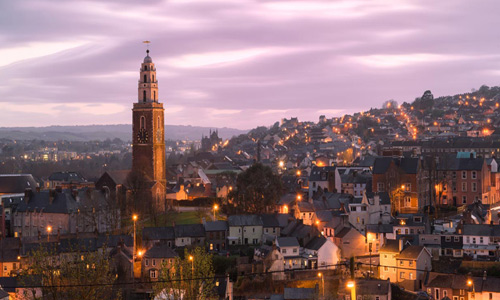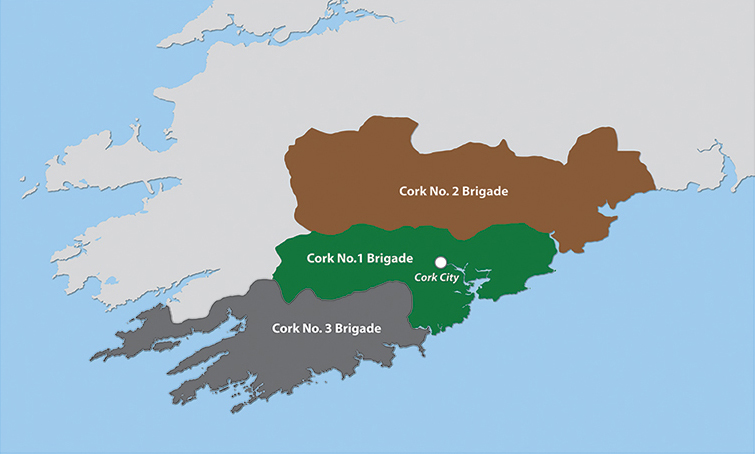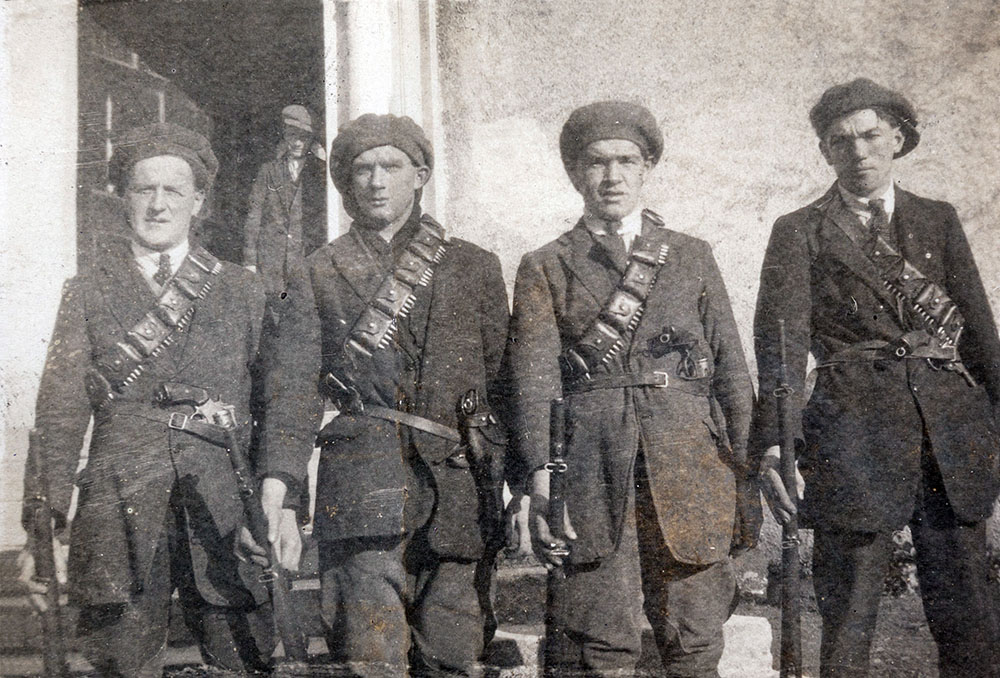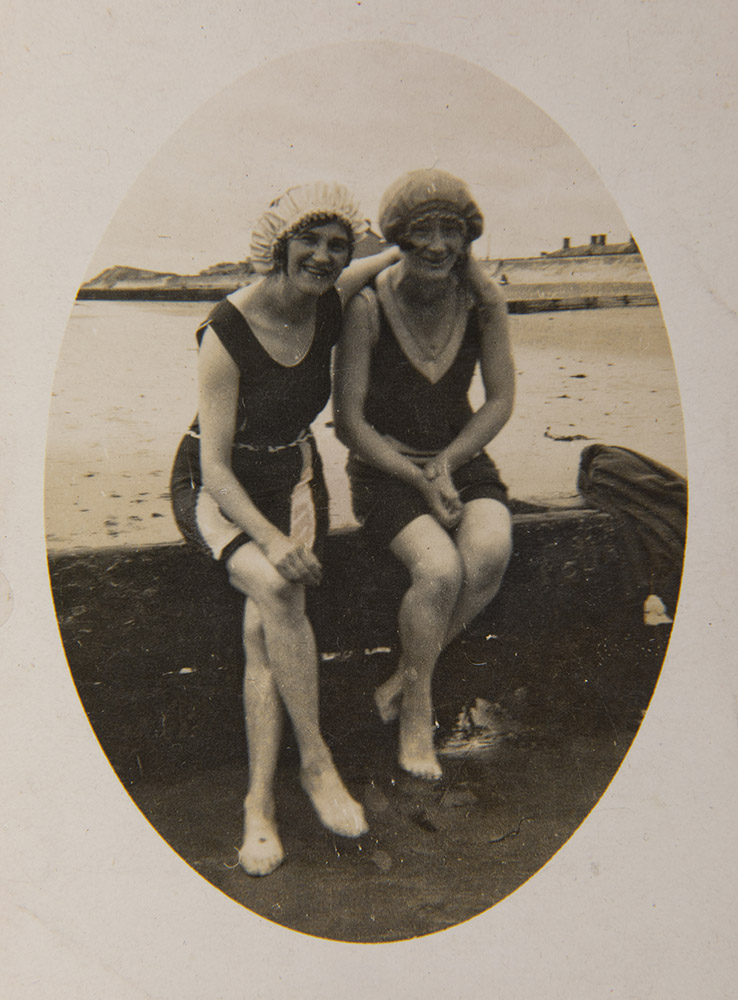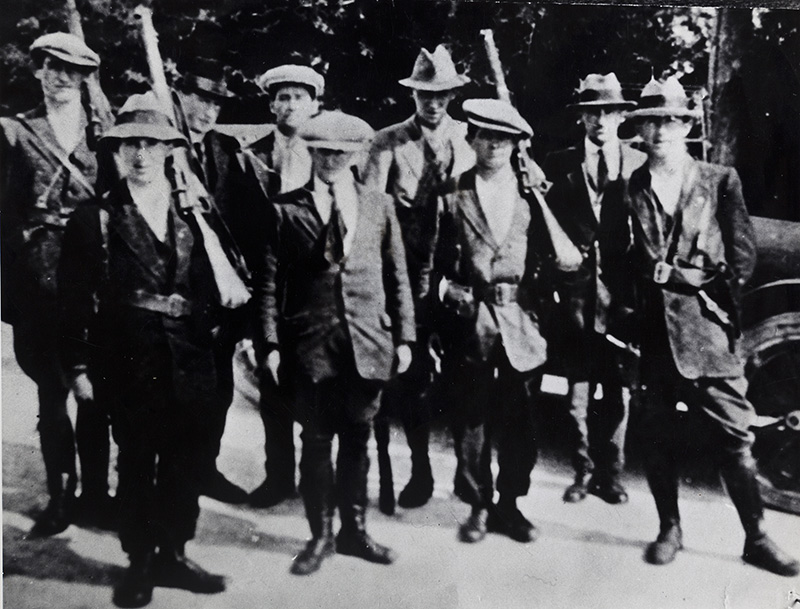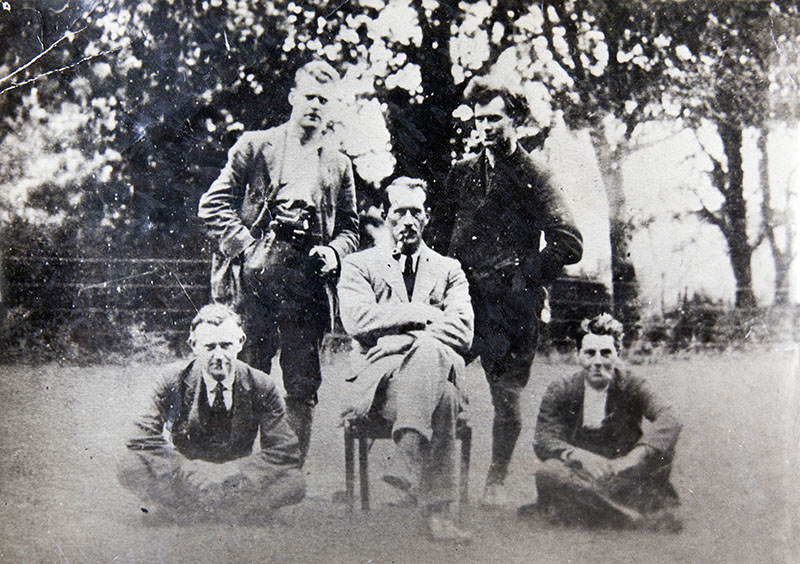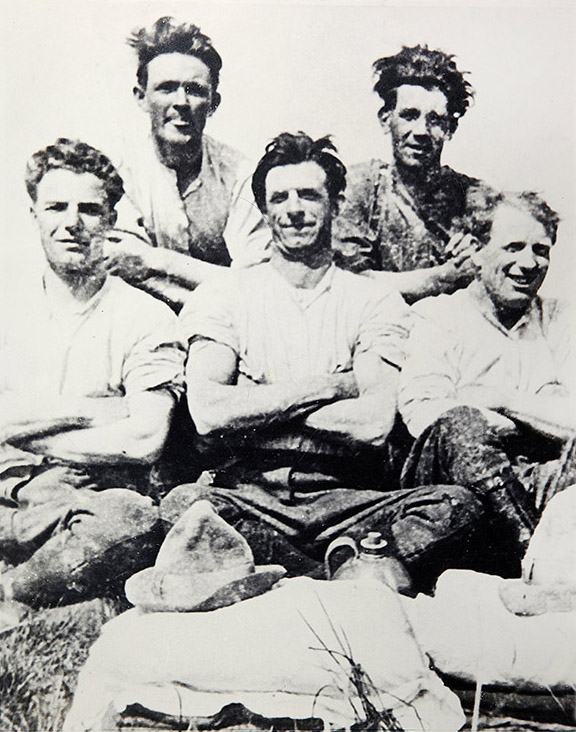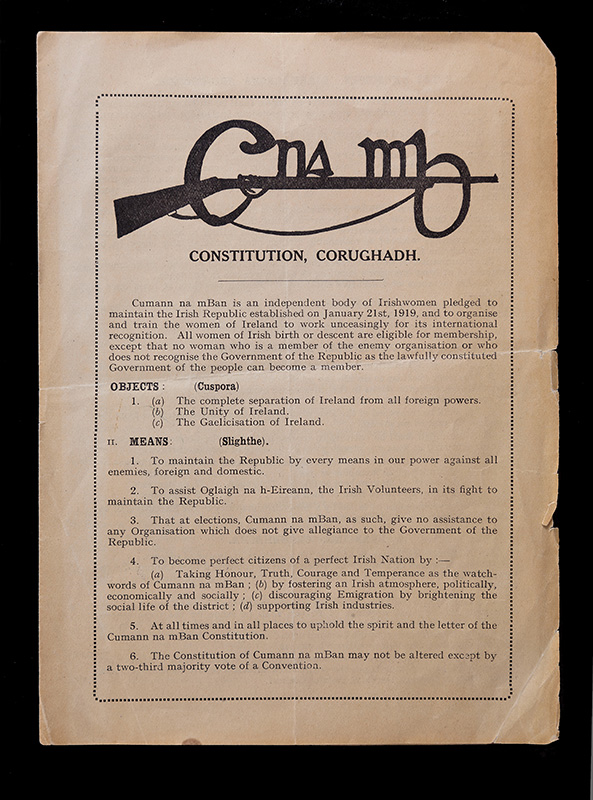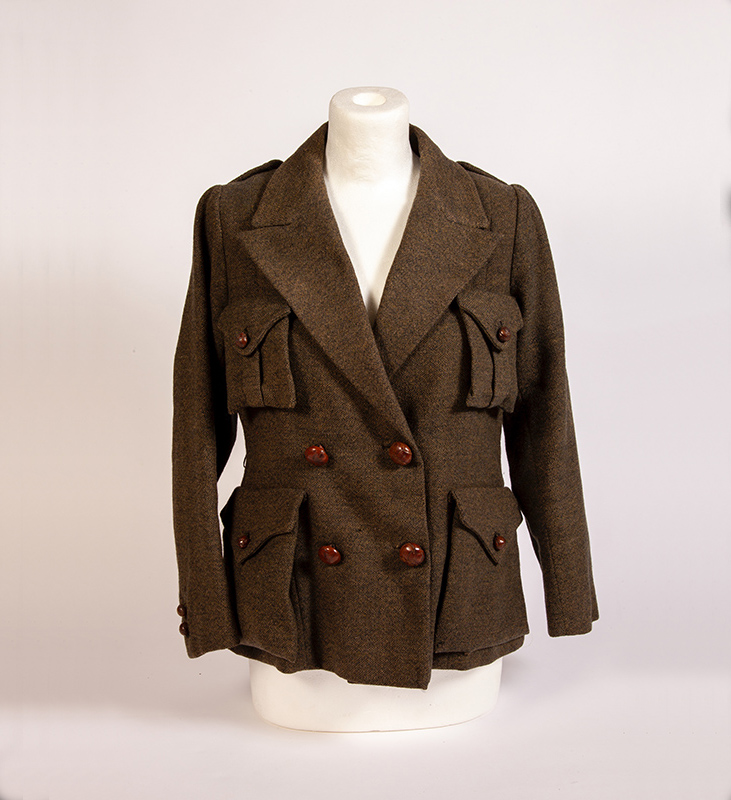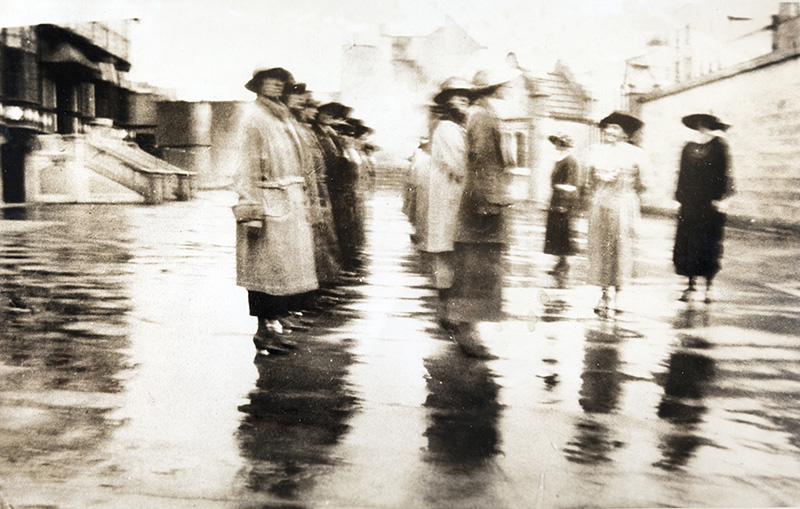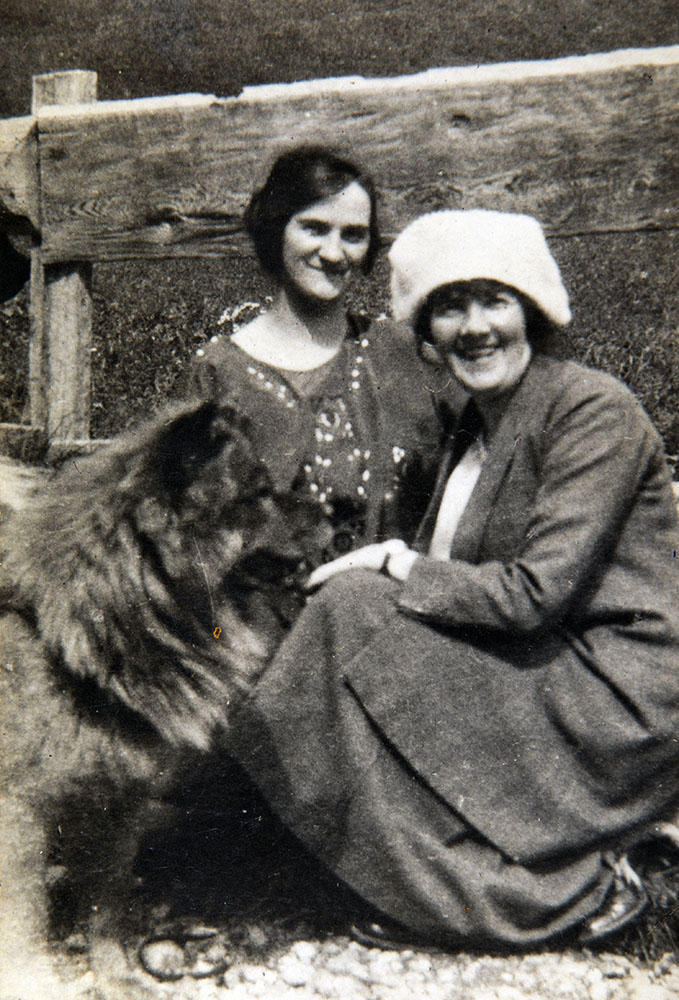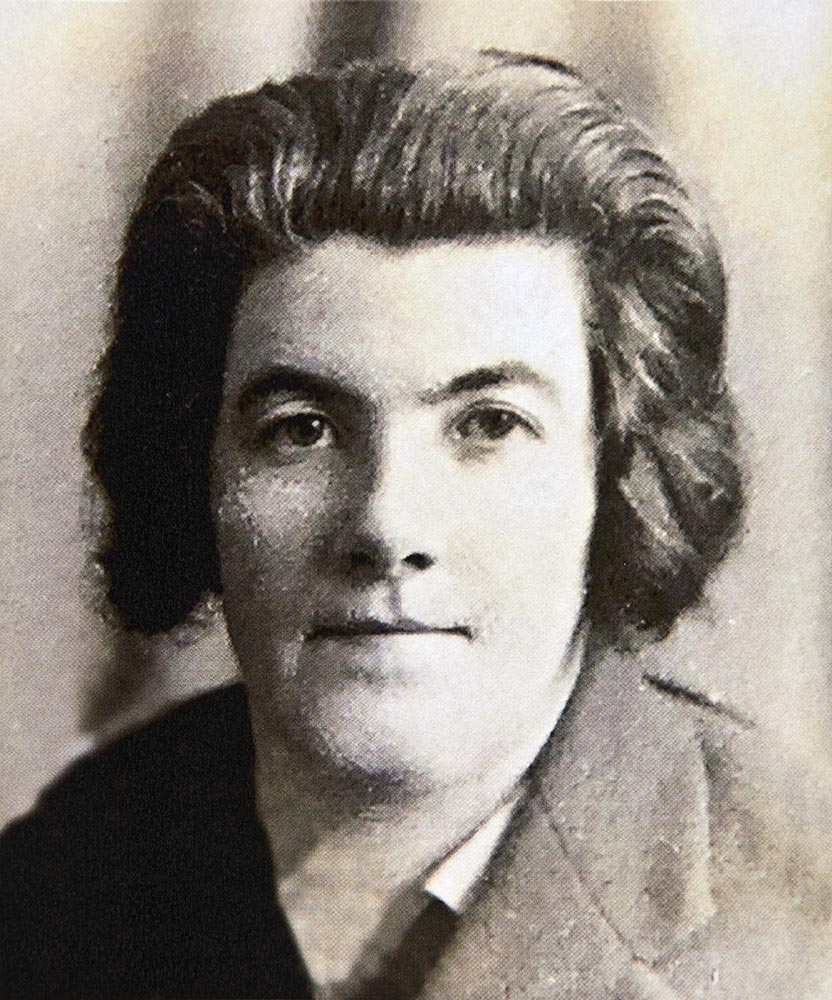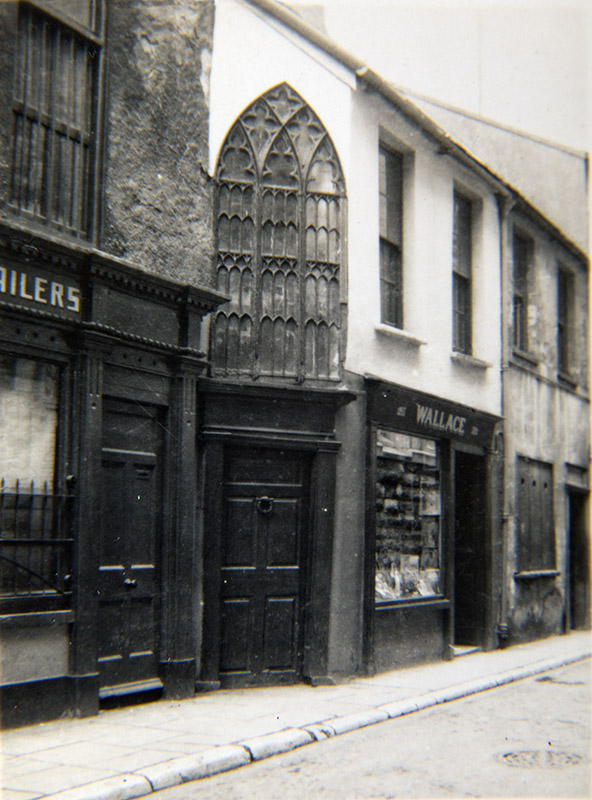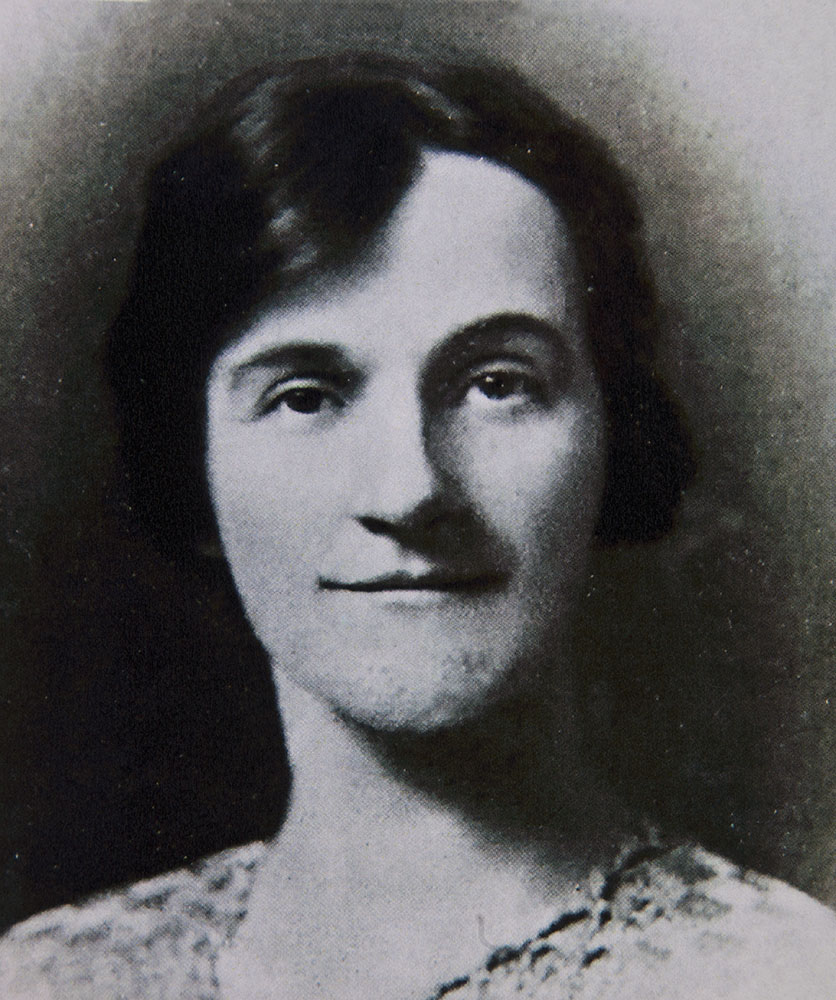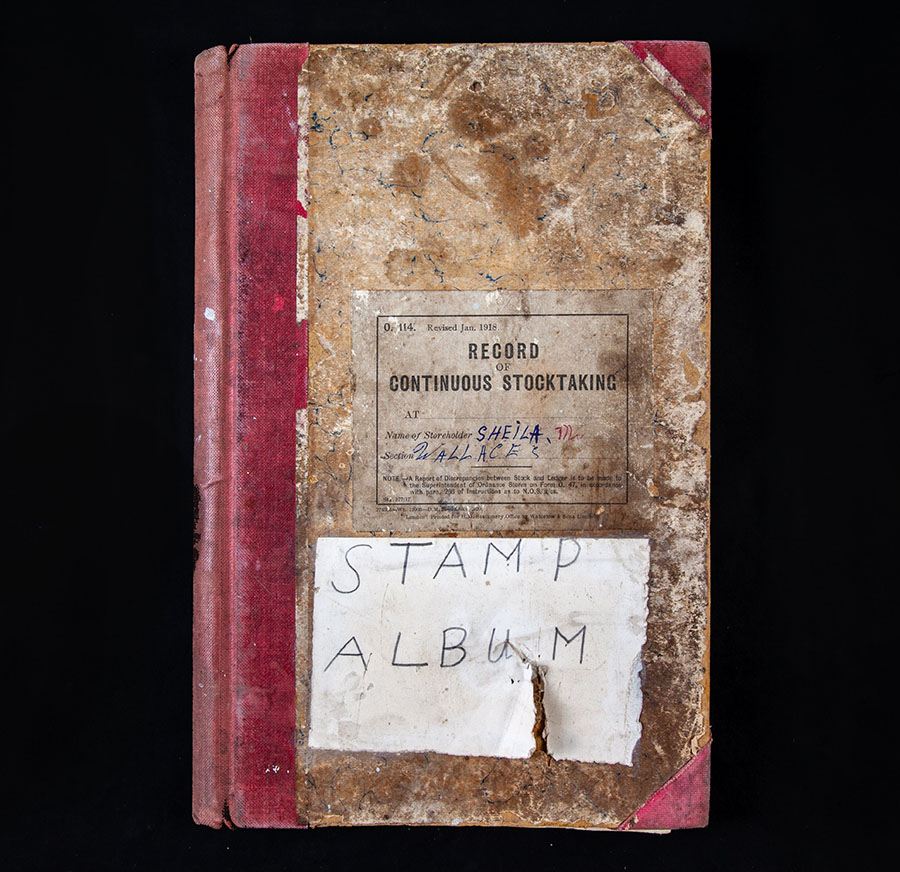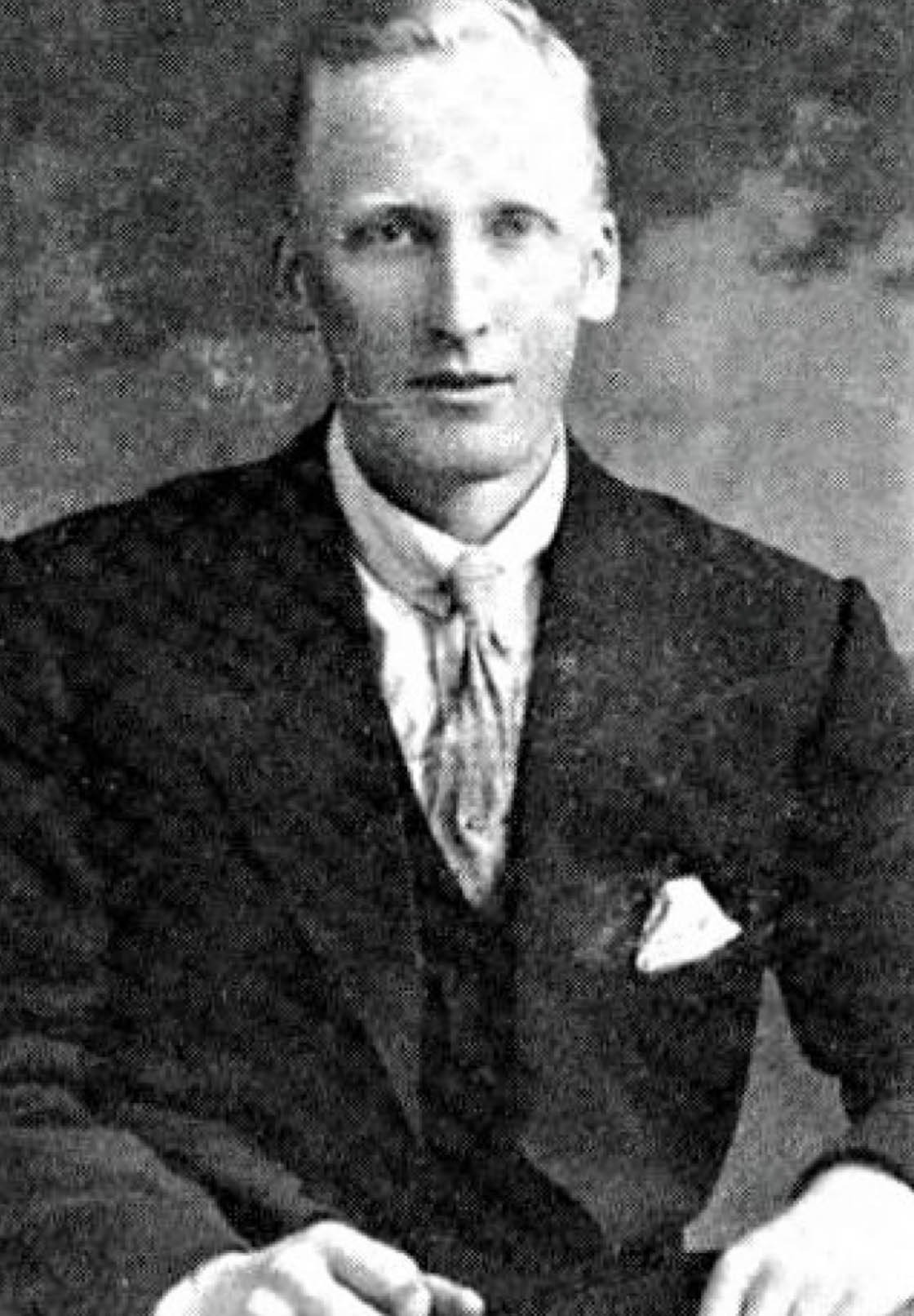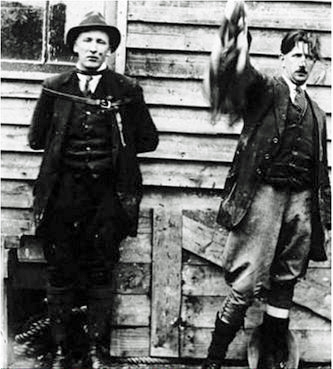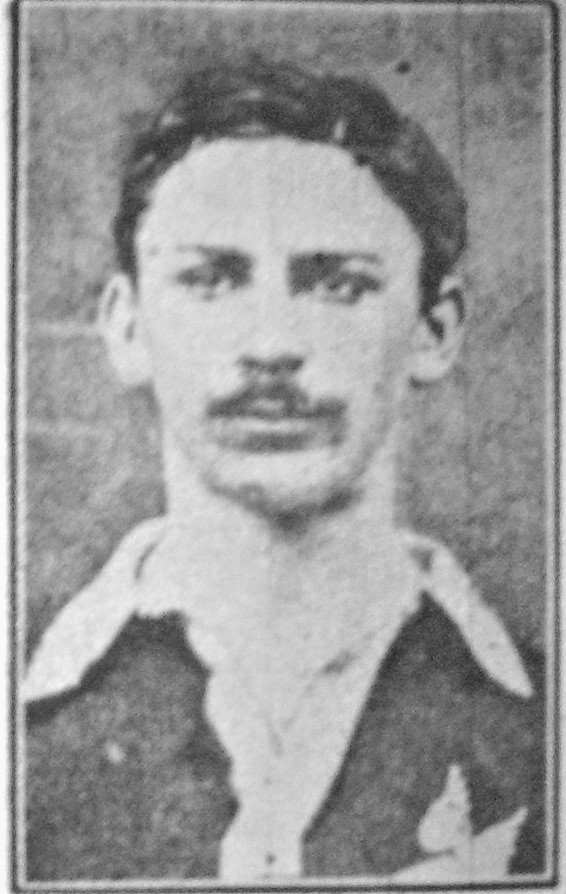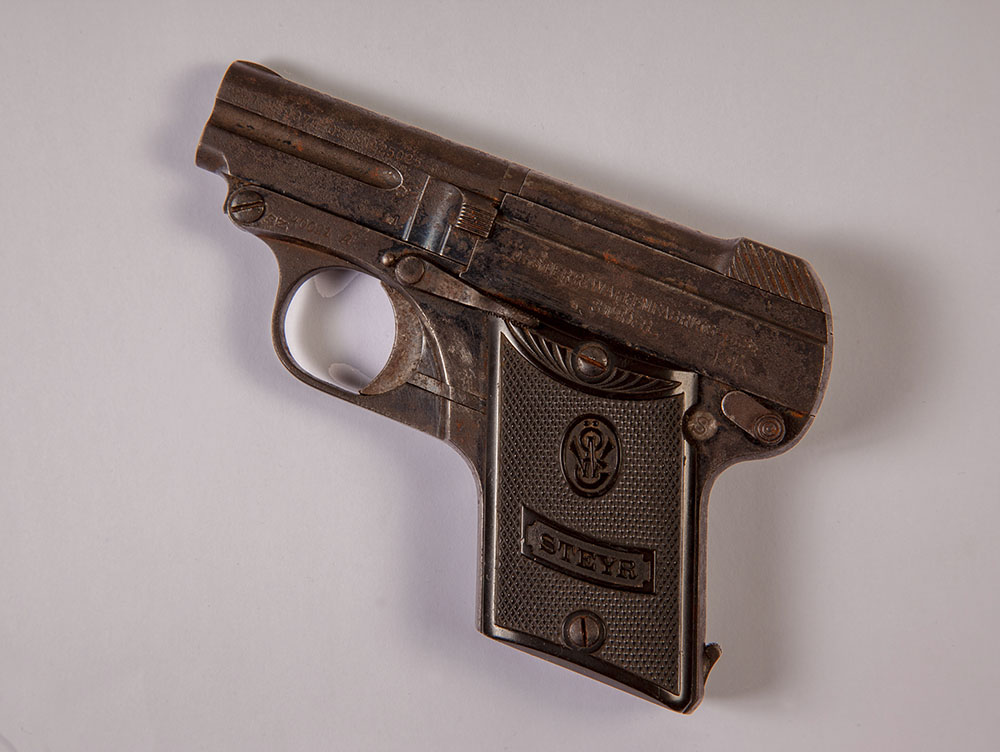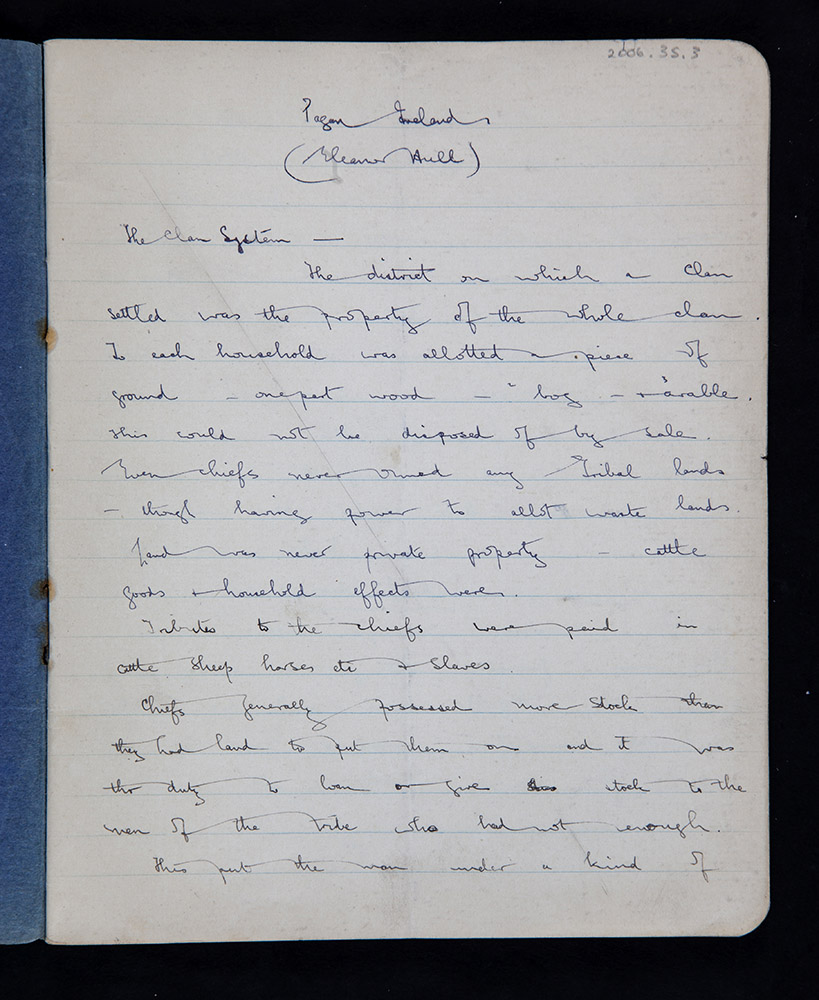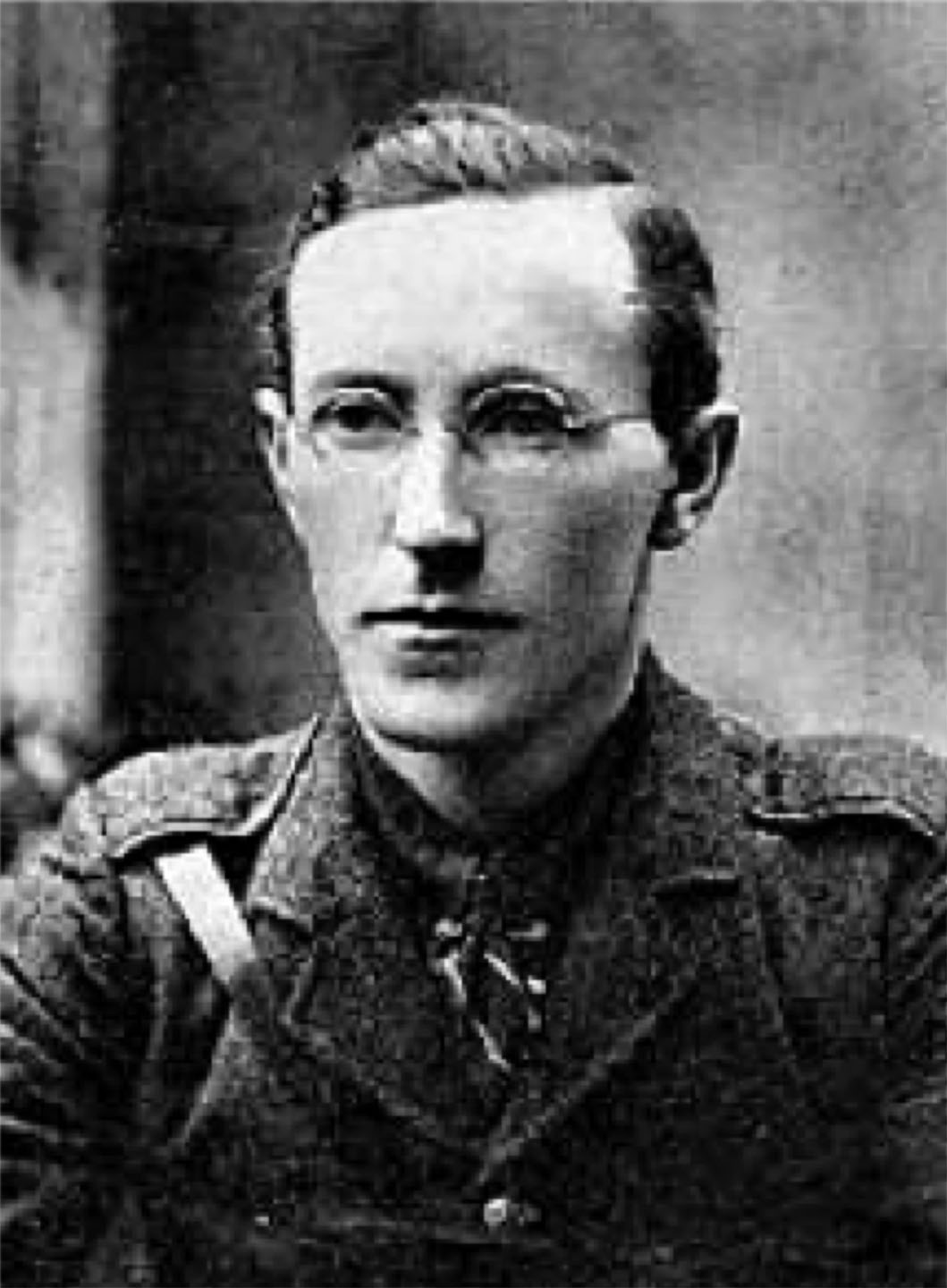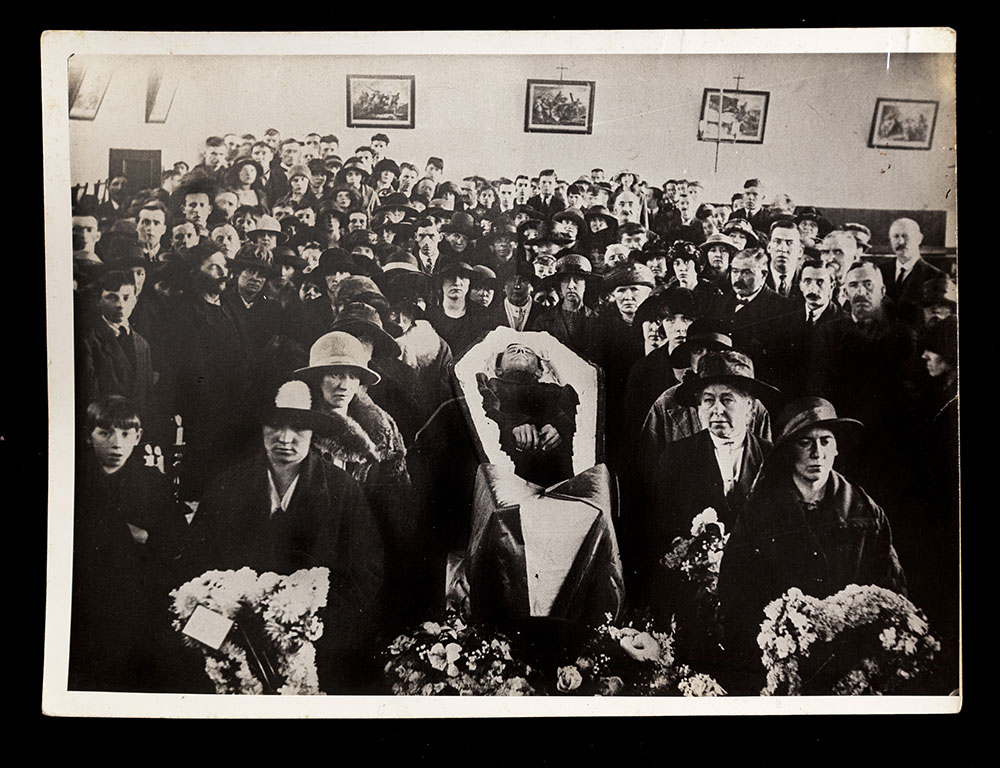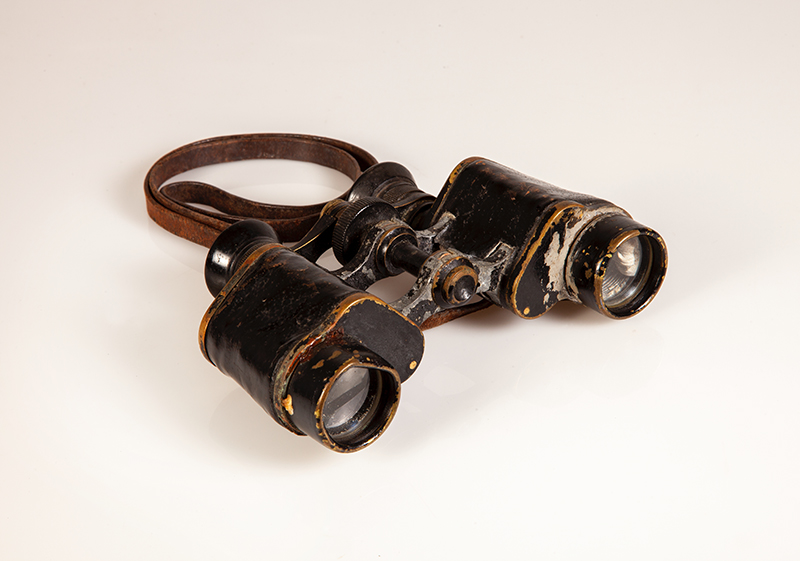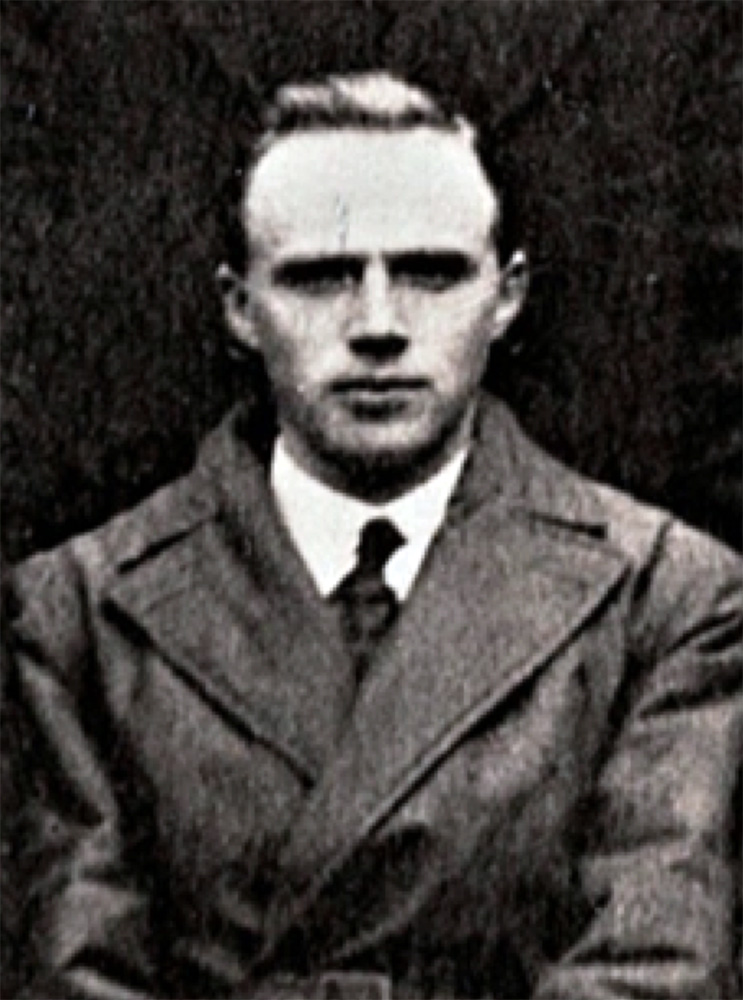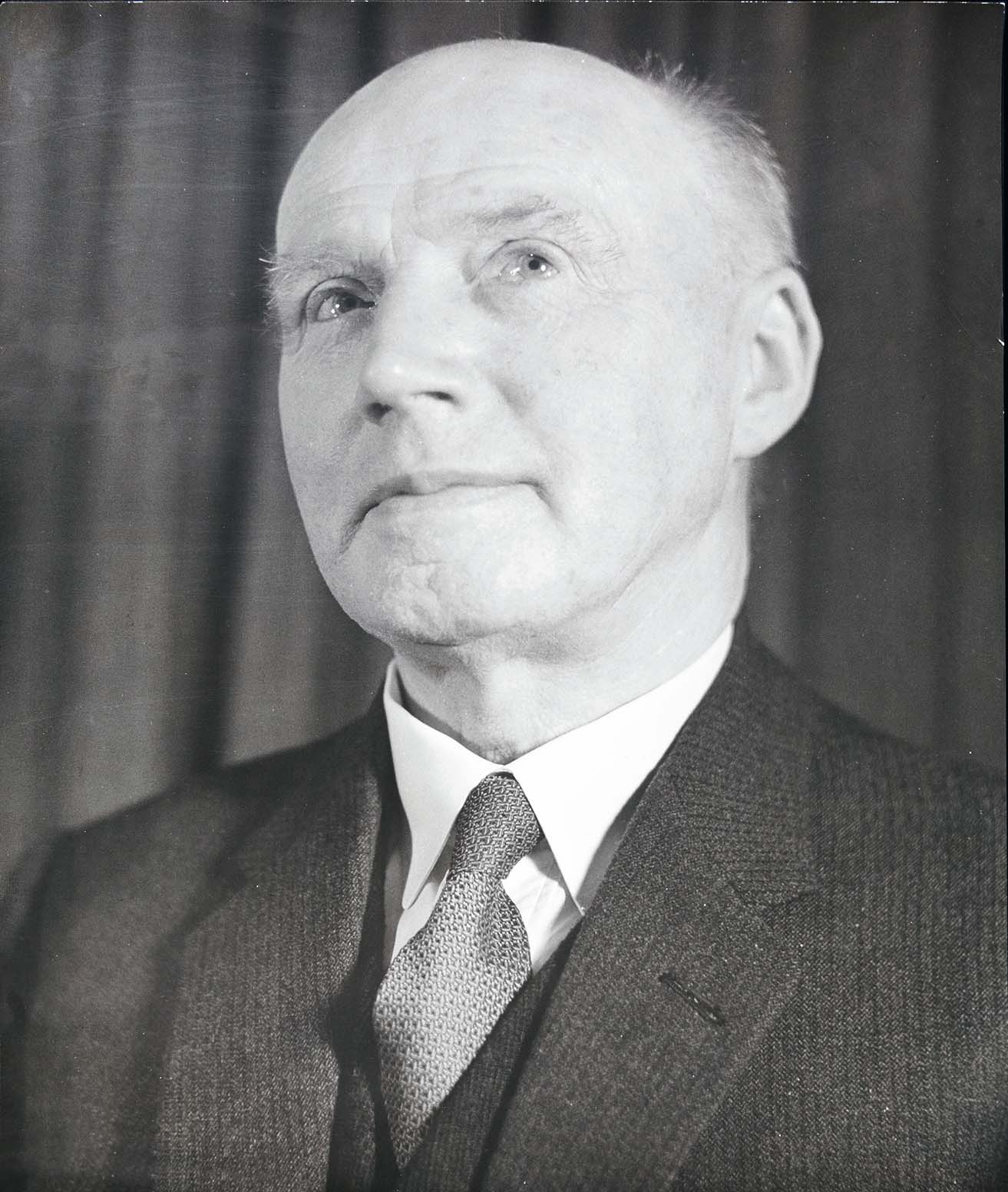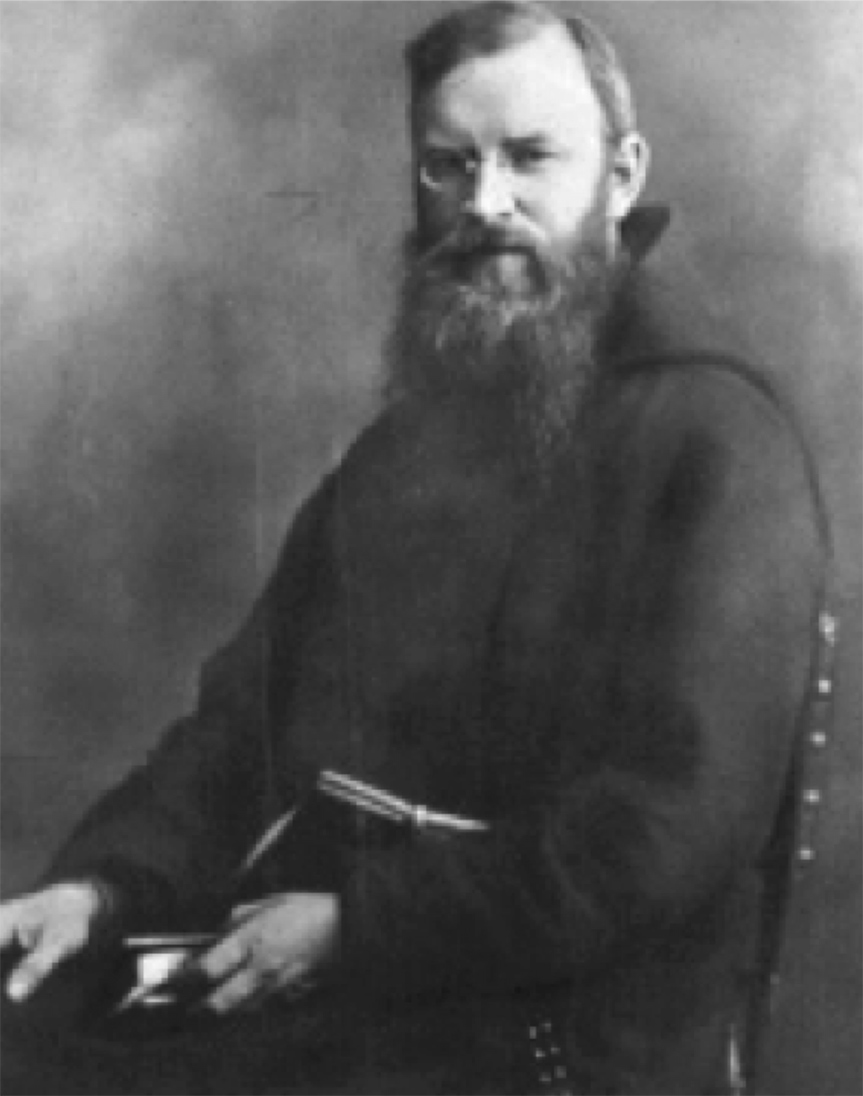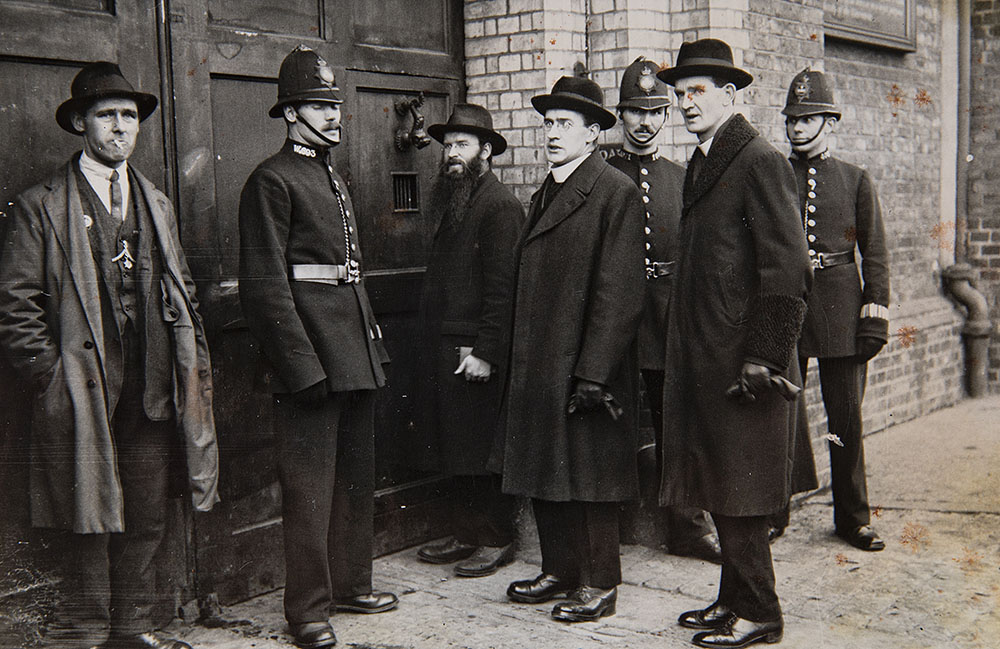The Republican Forces
(Above) Map showing Cork IRA Brigade boundaries, Jan 1919 to July 1921
Cork No. 1 Brigade
Irish Republican Army
Cork No. 1 Brigade had its origins in the Cork City Corps of Irish Volunteers that was formed at a public meeting held in Cork City Hall on 14 December 1914. At the end of December 1918, the Brigade was commanded by Tomás Mac Curtáin and covered the entire county. It also had over 8,000 members that were organised into twenty battalions – two in the city and eighteen in the county. Irish Volunteer Headquarters felt this unit was too large and at the beginning of January 1919, three new brigades were formed: Cork No 1, which covered the city and middle of the county; Cork No. 2, which covered North Cork and Cork No. 3, which covered West Cork.
(Above) A Section of an IRA Flying Column 1st Cork Brigade, possibly outside Macroom Castle just before it was burnt down
After the War of Independence commenced, the Irish Volunteers became known as the Irish Republican Army (IRA). During that conflict, Cork No. 1 Brigade would be commanded by Tomás Mac Curtáin (1919-1920), Terence MacSwiney (1920) and Seán O’Hegarty (1920-1921). Other key Brigade staff officers were: Florence O’Donoghue (Adjutant and Intelligence Officer); Joseph O’Connor (Quartermaster); Seán Culhane (Intelligence Officer); Shelia Wallace (Communications Officer) and Fr. Dominic O’Connor (Brigade Chaplain). The home and shop belonging to Shelia Wallace and her sister, Nora, on 13 Brunswick Street, acted as a secret Brigade headquarters until May 1921 when it was closed by the British Army.
(Above) Nora and Sheila Wallace
During the war, the Brigade had ten battalions, two in the city and eight in the county. It also formed a flying column that operated in rural areas and an active service unit that operated within the city. Key engagements included the capture of Carrigtwohill RIC Barracks (3 January 1920), the killing of RIC Divisional Commissioner, Gerald Bryce Ferguson Smyth (17 July 1920), the Dillon’s Cross Ambush (11 December 1920), the Dripsey Ambush (28 January 1921), the Clonmult Ambush (20 February 1921) and the Coolavokig Ambush (25 February 1921). When the Truce came into effect on 11 July 1921, the strength of the Brigade was 7,411 all ranks. [1]
(Above) Reprisal on Dillons Cross after the burning of Cork Dec 1920
Cork No. 2 Brigade
Irish Republican Army
Cork No. 2 Brigade was formed at a meeting held in the home of Batt Walsh at Glashabee, Co. Cork on 6 January 1920. Tomás Mac Curtáin presided at the meeting, and it was part of the reorganisation of the existing Cork Brigade. The Brigade initially consisted of seven battalions and had North Cork as its area of operations. During the War of Independence, it would be commanded by Liam Lynch (1919 – 1921), Seán Moylan (1921) and George Power (1921). Other members of the Brigade staff included Daniel Hegarty and Patrick Clancy (Vice-Commandants); Maurice Twomey and Dan Shinnick (Adjutants); Jeremiah Buckley and Ned Murphy (Quartermasters), Maurice Twomey (Intelligence Officer), Coughlan (Engineer Officer) and Michael Molan (Medical Officer)
(Above) Members of Cork No.2 Brigade Flying Column photographed at a training camp at Liscarroll 1921
During the war, the Brigade formed a flying column which was led by Seán Moylan. Among the Brigade’s key engagements were the attack on British troops at the Wesleyan Chapel in Fermoy (7 September 1919), the capture of Brigadier General Cuthbert Lucas (20 June 1920), the capture of Mallow Military Barracks (28 September 1920), the Tureengarriffe Ambush (28 January 1921), the Mourne Abbey Ambush (15 February 1921), the Clonbannin Ambush (5 March 1921) and the Rathcoole Ambush (16 June 1921).
(Above) General Lucas who was captured by the IRA (pictured with Liam Lynch Sean Moylan Paddy Michael Brennan and Joe Keane June 1920)
By June 1921, Cork No. 2 Brigade was effectively operating as two units. The battalions at the western end of its area of operations were operating under the command of Vice Commandant Paddy O’Brien while those at the eastern end were operating under the command of Commandant George Power. As a result of this, a decision was taken to formally reorganise the unit into two separate brigades. On 10 July 1921, Cork No 4 Brigade, consisting of the Mallow, Kanturk, Charleviile, Newmarket and Millstreet Battalions was formed under the command of Paddy O’Brien. The new Cork No. 2 Brigade now consisted of the Fermoy, Lismore, Castletownroche and Glanworth Battalions under the command of George Power. When the Truce came into effect on 11 July 1921, the strength of Cork No. 2 Brigade was 2,407 and Cork No. 4 Brigade was 3,519 all ranks.
(Above) British forces checkpoint in Fermoy
Cork No. 3 Brigade
Cork No. 2 Brigade was formed at a meeting held at Kilnadur, Dunmanway, Co. Cork on 5 January 1920. Michael Collins presided at the meeting which was part of the reorganisation of the existing Cork Brigade. The brigade consisted of seven battalions and had West Cork as its area of operations. During the War of Independence, it would be commanded by Tom Hales (1919 – 1920), Charlie Hurley (1920 – 1921) and Liam Deasy (1921). Among other officers of the brigade staff were Gibbs Ross and Flor Begley (Adjutant and Assistant Adjutant), Pat Harte, Dick Barrett and Tadhg O’Sullivan (Quartermasters), Frank Neville (Assistant Quartermaster), Seán Buckley (Intelligence Officer), Dan Holland and Dan Sweeney (Transport Officers), Michael Crowley (Engineer Officer) and Con Lucy (Medical Officer).
In the autumn of 1920, the Brigade formed a flying column. Commanded by Tom Barry, this column would become one of the most successful in the IRA and would inflict serious damage on the forces of the Crown operating in West Cork. A veteran of the British Army who fought in Mesopotamia during the First World War, Barry was able to use his military experience to good effect and he proved to be an aggressive and effective commander.
(Above) Photo of members of the 5th Batallion 3rd West Cork Brigade IRA
Among the operations conducted by the Brigade during the war were: Numerous attacks on members of the RIC, the Toureen Ambush (26 October 1920), the Kilmichael Ambush (28 November 1920), the attack on Innishannon RIC Barracks (25 January 1921), the Upton Ambush (15 February 1921), the Crossbarry Ambush (19 March 1921) and the attack on Rosscarbery RIC Barracks (31 March 1921). During the war, the main British Army unit opposing the Brigade in West Cork was the 1st Battalion of the Essex Regiment, which was based in Kinsale and Bandon. When the Truce came into effect on 11 July 1921, the strength of Cork No. 3 Brigade was 5,653 in all ranks.
Cumann na mBan
The first branch of Cumann na mBan (Irishwomen's Council) was formed at a meeting held in Wynn’s Hotel in Dublin on 2 April 1914. The meeting was chaired by Professor Agnes Farrelly of University College Dublin. Though nominally independent, the organisation acted as a female auxiliary to the Irish Volunteers. According to its constitution, its primary aims were to advance the cause of Irish liberty and to assist in arming and equipping a body of Irish men for the defence of Ireland.
(Above) Copy of the Cumann Na mBan constitution
(Above) Dr Helene O'Keeffe from UCC gives us an overview of Cumann Na mBan activities during the Irish War of Indpendence
Within weeks of the inaugural meeting, other branches were formed throughout Ireland. In May 1914 a meeting was held in the home of Mary MacSwiney in Blackrock in Cork to discuss the formation of a branch in the city. A public meeting to establish this branch was held in a hall known as An Dún, on Queen Street. The first officers elected were: Madeline O’Leary President; Mary MacSwiney, Vice-President; Miss Nora O'Brien, Secretary and Madge Barry, Treasurer. Members were trained by officers of the Irish Volunteers who conducted classes in arms drill, foot drill, first aid and Morse code. They also received weapons training.
(Above) This Cumann Na mBan tunic belonged to Rita O’Beirne (nee Mintern) who was a member of the Cumann na mBan in Cork during the War of Independence
(Above) Group of Cumann na mBan volunteers
When the War of Independence commenced, Cumman na mBan had branches throughout Cork city and county that were organised into District Councils. There were fifteen branches affiliated to the Cork District Council which covered the city and parts of mid- Cork. During the war, members of the organisation provided administrative, communication and logistical support to the IRA. Among the tasks carried out by its members were: gathering intelligence, carrying dispatches, providing ‘safe houses’, storing and conveying arms and ammunition, organising funerals and providing support for republican prisoners. Members also raised funds and actively supported Sinn Féin candidates during election campaigns. The sacrifices and efforts made by members of the Cumman na mBan in Cork to the Republican side during the war, on both the political and military fronts, cannot be underestimated and contributed significantly to the fight for Irish freedom.
(Above) Group of Cumann na mBan outside the front of the Beamish and Crawford brewery
Republican Forces-Biographies
Sheila and Nora Wallace
Shelia and Nora Wallace
Headquarters, Cork No. 1 Brigade, IRA
Shelia (b.1887) and Nora (b.1893) were two of the ten children of Jeremiah and Mary Wallace (née Keeffe) of Kilcullen South, Donoughmore, Co. Cork. In 1910, the sisters moved to Cork and they later opened a newsagent and shop in the centre of the city at 13 Brunswick Street (now Saint Augustine Street). Devout Catholics and cultural nationalists, they were also socialists and supporters of James Larkin, James Connolly and Countess Markievicz. Their shop also sold political pamphlets and periodicals that promoted the Irish language.
(Above) Nora Wallace
The sisters became involved in the Irish Citizen Army and, in 1917, they established an organisation known as the Women’s Citizen Army in Cork. Their belief in an independent Ireland also led them to support the republican movement. In 1918, their shop became a meeting place for Cork republicans, and it soon developed into the de facto headquarters of Cork No. 1 Brigade of the IRA. Both sisters also joined the IRA and Shelia was appointed a Staff Officer in charge of communications.
(Above) The Wallace sisters shop on St Augustine St, Cork.
(Above) Sheila Wallace
During the War of Independence, the sisters processed IRA despatches and intelligence reports, stored and distributed arms and ammunition and deciphered codes. On the night of 19 March 1920, Tomás Mac Curtáin attended a meeting in their shop a few hours before he was killed. The sisters eventually came under suspicion from British authorities. Their shop was closed by the British Army in May 1921, and they were ordered to leave the city. They both took the republican side during the Civil War. Shelia passed away on 14 April 1944. Nora continued working in the shop until 1960. She died on 17 September 1970. Both sisters were buried in St. Finbarr’s Cemetery.
(Above) A ledger used by the Wallace Sisters to record an inventory of arms for Cork No. 1 Brigade.
For more see our Resources Page
(Courtesy of Bill Murphy)
Tom Hales
Commandant Tom Hales
Cork No. 3 Brigade, IRA
Thomas (Tom) Hales was born on 5 March 1892 at Knocknacurra House, Ballinadee, Bandon, Co. Cork. The son of Robert and Mary Hales (née Fitzgerald), he was educated at Ballinadee National School and Warner’s Lane School in Bandon. At an early age, he developed a hatred of British rule, as did his brothers Seán, William, Robert and Donal. This led him to join the Irish Volunteers when that organisation was established in November 1913. He became captain of the Ballinadee Company and he paraded with that unit on Easter Sunday 1916 in accordance with the original plans for the Rising.
Hales evaded arrest in the aftermath of the Easter Rising and he later became commander of the Bandon Battalion of Irish Volunteers. In January 1919, he was appointed the first commanding officer of Cork No. 3 Brigade. Under his leadership, the brigade conducted several operations against Crown forces. On 27 July 1920, Hales and the brigade quartermaster, Patrick Harte, were arrested by Crown forces at Laragh, Bandon. Both men were tortured while in custody. Hale’s mouth and hands were badly damaged and he had to spend time in hospital before being tried and sentenced to two years penal servitude. He served his sentence in Dartmoor and Pentonville prisons and was only released at Christmas 1921.
(Above) Patrick Harte and Tom Hales being tortured while in custody 1920.
During the Civil War, Hales commanded Cork No. 3 Brigade of the Anti-Treaty IRA. Arrested in November 1922, he was detained in Cork Prison and Hare Park Camp until Christmas 1924. On 30 April 1927, he married Ann Lehane and the couple had five children. Tom Hales died 29 April 1966 at St Finbarr's hospital, Cork, and is buried at St Patrick's Cemetery, Bandon.
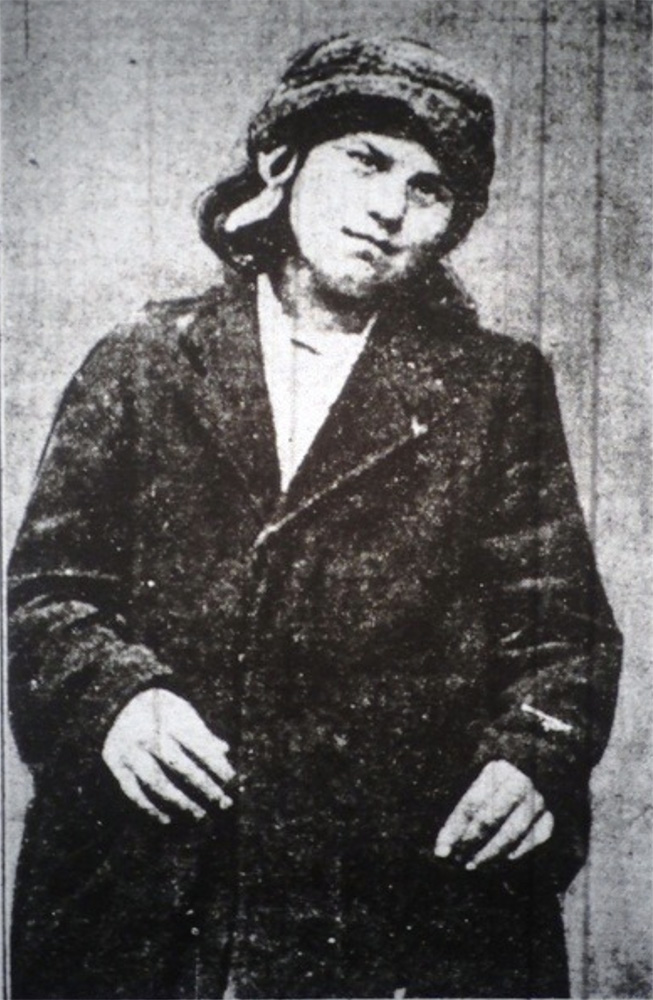
Mary Bowles
The story of Mary Bowles
(Above) Historian Anne Twomey gives us a insight into Cumann Na mBan member Mary Bowles
Sean O'Hegarty
Commandant Seán O’Hegarty
Officer Commanding, Cork No. 1 Brigade, IRA
Seán O'Hegarty, was born at 26 Evergreen Street, Cork, on 21 March 1881, the son of John and Katherine Hegarty (née Hallahan). Educated at the North Monastery School, he subsequently obtained employment in the post office and became involved in a number of nationalist organisations including the Gaelic League, Sinn Féin and the Irish Republican Brotherhood (IRB). In 1912, he married Cumann na mBan activist, Maghdalen (Mid) Ní Laoghaire. The following year, he joined the Cork City Corps of Irish Volunteers and was appointed to the unit’s executive.
Sean O'Hegarty's Austrian Steyr gun.
In October 1914, O'Hegarty was dismissed from the post office and was excluded from Co. Cork by the British authorities. He moved to Enniscorthy, Co. Wexford, but returned to Ballingeary, Co. Cork, prior to the 1916 Easter Rising. In 1917, he became second-in-command of the Cork Brigade of Irish Volunteers. By now, he was also the senior IRB officer in Cork. When this exposed the existence of a dual IRB/Volunteer chain of command in the Brigade, he stepped down and returned to the ranks as a Volunteer.
(Above) Sample page from one of O'Hegarty's notebooks. For more info see our Resources Page
After Terence MacSwiney died on hunger strike on 25 October 1920, O’Hegarty became commander of Cork. No. 1 Brigade of the IRA. Puritanical in nature, he was also an aggressive and effective leader, personally taking part in a number of operations including the attempt to capture Major General Strickland (24 September 1920) and the Coolavokig Ambush (25 February 1921). He also authorised the execution of a number of suspected spies and informers. He resigned from the IRA after the Civil War broke out in June 1922 and remained neutral during the conflict. He died on 31 May 1963 and was buried in Kilmurry Cemetery.
Liam Lynch
Commandant Liam Lynch
Officer Commanding Cork No. 2 Brigade IRA
Liam Lynch was born on 9 November 1893 in Barnagurraha, Anglesboro, Co. Limerick. He was the fifth of seven children born to farmer, Jeremiah, and his wife, Mary (neé Kelly). In 1910, after attending Anglesboro National School, he moved to Mitchelstown, Co. Cork, to take up a three-year apprenticeship in a hardware store. Five years later he moved to Fermoy, where he worked in the store of Messrs J. Barry & Sons.
(Above) The body of General Liam Lynch lying in state, Clonmel 1923.
While in Mitchelstown, Lynch became a member of the Gaelic League and the Irish Volunteers. When the Volunteer movement split in September 1914, over the issue of participating in the First World War, Lynch initially remained with the National Volunteers. However, when he saw Thomas and William Kent being marched across the bridge in Fermoy on 2 May 1916, he decided to join the Fermoy Company of Irish Volunteers. In January 1919, he was appointed the Commanding Officer of the newly formed Cork No. 2 Brigade.
(Above) Liam Lynch's binoculars.
During the War of Independence, Lynch proved to be a talented and aggressive commander. Among the operations he led were the ambush of British soldiers in Fermoy (7 September 1919); the capture of Brigadier General Cuthbert Lucas (26 June 1920) and the capture of the military barracks in Mallow (28 September 1920). In April 1921, Lynch was appointed the Commanding Officer of the 1st Southern Division which comprised of units from counties Cork, Kerry, Waterford and west Limerick. He opposed the Treaty and, during the Civil War, he became Chief of Staff of the Anti-Treaty IRA. On 10 April 1923, he was shot and mortally wounded in the Knockmealdown Mountains while trying to avoid a National Army patrol. He was buried in Kilcrumper Cemetery, Co. Cork.
Flor O'Donoghue
Captain Florence O’Donoghue
Headquarters, Cork No. 1 Brigade, IRA
Florence ‘Florrie’ O'Donoghue was born on 6 May 1897, in Rathmore, Co. Kerry; the son of Timothy and Julia O'Donoghue (née Murphy). Educated locally, he moved to Cork City in 1910 to work in a shop owned by his mother's cousin, Michael Nolan, at 55 North Main Street. In 1917, he joined the Cork Brigade of Irish Volunteers and was sworn into the Irish Republican Brotherhood (IRB). The following year, he was appointed Brigade Adjutant and Intelligence Officer. He went on to establish an effective intelligence network that would contribute to many successful operations conducted by the IRA.
In 1919, O’Donoghue embarked on a romantic relationship with Josephine Marchment, a war widow employed in Victoria Barracks. She had had two young sons, Gerald, who lived with her in Cork, and Reggie, who lived with her in-laws in Wales. In November 1920, O’Donoghue and other members of the IRA abducted Reggie and took him to Cork to be reunited with his mother. In turn, Josephine agreed to provide O’Donoghue with military intelligence from the Barracks. The couple were married on 27 April 1921 and would have four children of their own.
(Above) Florence O'Donoghue in later years.
In 1921, O’Donoghue was appointed Adjutant and Intelligence Officer of the 1st Southern Division, IRA. He also became the Cork County Centre of the IRB. After the Civil War broke out in June 1922, he formed the Neutral IRA Association with Seán O’Hegarty. During the Emergency, O’Donoghue joined the Defence Forces and worked in military intelligence. In later years, he became a noted historian and secretary of a number of Cork-based associations. He passed away on 16 December 1967 and was buried in St. Finbarr’s Cemetery.
Father Dominic
Father Dominic O’Connor O.F.M. Cap
Chaplain, Cork No. 1 Brigade
John Francis O’Connor was born into a devout Roman Catholic family in Cork on 13 February 1883, the son of John and Mary O’Connor (née Sheehan). He entered the Order of Friars Minor Capuchin (O.F.M. Capuchin) in October 1899, and received the religious name of Dominic. On 17 March 1906, he was ordained a priest at the Capuchin Friary in Kilkenny.
(Above) Father Dominic (centre with beard) visiting Terence MacSwiney in Brixton Prison 1920
In April 1916, Fr. Dominic volunteered to serve as a chaplain with the British armed forces and went on to serve in Salonika. He relinquished this post in July 1917, and returned to Cork. His support for an Irish Republic led Tomás Mac Curtáin to appoint him Chaplain to Cork No. 1 Brigade of the IRA and to the Lord Mayor of Cork. His brother, Joseph O’ Connor, was Quartermaster of the Cork No. 1 Brigade.
(Above) Father Dominic's body being repatriated back to Ireland in 1958
Fr. Dominic was among the first to arrive at Mac Curtáin’s home after he was killed there on 20 March 1920. He also administered to Lord Mayor, Terence MacSwiney, during his hunger strike in Brixton Prison, London. When Bishop Cohalan of Cork threatened to excommunicate members of the IRA in December 1920, Fr. Dominic assured Volunteers that the acts of the IRA were ‘not sinful’. Later that month, he was arrested in Dublin and sentenced to three years in Pankhurst Prison. Released in January 1922, the following month he was granted the Freedom of Cork for ‘his valuable services rendered to the first two Republican Lord Mayors of Cork’. In November 1922, he was transferred to the Capuchin Mission in Oregon in the United States. He died there on 17 October 1935. His remains were repatriated to Ireland in June, 1958, and buried in the Capuchin College in Rochestown, Co. Cork.

